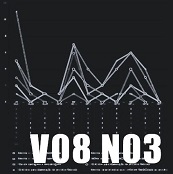Abstract
The mass production of social housing, used as a strategy to reduce the Brazilian housing deficit, widened the discussion about the adoption of requirements that increase the quality of projects. In this sense, the concept of flexibility has been treated as an attribute to meet the needs of its users, in its diverse family groups, throughout the time of permanence in the dwelling. In this context, the objective of this work is to perform a Systematic Review of Literature (SLR) on flexibility. A research protocol was defined and articles published in the last ten years were searched in indexed journals. Through the StArt software, articles were selected and categorized into three categories: study’s area, theoretical approach, and methods. The results show that most of the work is related to housing design and the design process; has a theoretical approach on the characteristics that give flexibility to the project, and are based on empirical studies methods. Besides, the data point out that the thematic has little prominence and coverage in indexed journals, and still lacks studies on its own theoretical field and taxonomy, since there isn’t a precise characterization of concepts and similar terms such as Adaptability. The relevance of this work is highlighted by the fact that RSL is justified not only by outlining the published research but also by providing a context that elucidates what still needs to be researched.
References
ABREU, R.; HEITOR, T. Estratégias de Flexibilidade na arquitetura doméstica holandesa: da conversão à multifuncionalidade. Infohabitar – Revista Semanal sobre o Habitat Humano, Lisboa, n. 122, jan., online, jan. 2007. Disponível em: http://infohabitar.blogspot.com.br/2007/01/estratgias-de-flexibilidade-na.html. Acesso em: 10/7/2017.
BRANDÃO, D. Q. Diversidade e potencial de Flexibilidade de arranjos espaciais de apartamentos: uma análise do produto imobiliário brasileiro. 2002. 443 f. Tese (Doutorado em Engenharia de Produção) - Universidade Federal de Santa Catarina, Florianópolis.
BRANDÃO, D. Q. Disposições técnicas e diretrizes para projeto de habitações sociais evolutivas. Ambiente Construído (Online), Porto Alegre , v. 11, n. 2, p. 73-96, June 2011. doi: http://dx.doi.org/10.1590/S1678-86212011000200006.
BRANDÃO, D. Q. Habitação social evolutiva: aspectos construtivos, diretrizes para projetos e proposição de arranjos espaciais flexíveis. Cuiabá: CEFETMT, 2006.
BRANDÃO, D. Q.; HEINECK, L. F. M. Formas de aplicação da Flexibilidade arquitetônica em projetos de edifícios residenciais multifamiliares. In: ENCONTRO NACIONAL DE ENGENHARIA DE PRODUÇÃO. Anais... Gramado: ABEPRO, PPGEP/UFSC, 1997.
CARDOSO, A. L.; ARAGÃO, T. A.; ARAUJO, F. D. S. Habitação de interesse social: política ou mercado? Reflexos sobre a produção do espaço metropolitano. In: ENCONTRO NACIONAL DA ANPUR, 14., 2011, Rio de Janeiro. Anais... Rio de Janeiro: ANPUR, maio de 2011. Disponível em: papers3://publication/uuid/AE17045C-60F0-45FA-8D31-F3F4812355D5. Acesso em: 15 de julho de 2017.
COOPER, H.; HEDGES, L.V.; VALENTINE, J.C. Handbook of Research Synthesis and Meta-Analysis, Second Edition. New York: Russell Sage Foundation, 2009.
DHAR, T.K.et al. How does flexible design promote resource efficiency for housing? A study of Khulna, Bangladesh. Smart and Sustainable Built Environment, v. 2, n. 2, p. 140–157, 2013. https://doi.org/10.1108/SASBE-10-2012-0051
FABBRI, S. et al. Improvements in the StArt tool to better support the systematic review process. In: INTERNATIONAL CONFERENCE ON EVALUATION AND ASSESSMENT IN SOFTWARE ENGINEERING. 21, 2016, Limerick. Proceedings... Limerick: ACM/Digital Library, 2016. doi: http://dx.doi.org/10.1145/2915970.2916013
FRIEDMAN, A. The Adaptable House. Designing Homes for Change. New York: McGraw-Hil, 2002.
GALFETTI, G. G. Model apartments: experimental domestic cells. Barcelona: Gustavo Gili, 1997.
GOUGH, D, OLIVER, S, THOMAS, J. An introduction to systematic reviews. London: Sage Publications Ltd,, 2012.
ISMAIL, Zulkefle; ABDUL RAHIM, Asiah. Adaptibility and modularity in housing: a case study of Raines Court and Next21. In: INTERNATIONAL CONFERENCE ON UNIVERSAL DESIGN IN BUILT ENVIRONMENT, 2011, Kuala Lumpur. Proceeding… Kuala Lumpur: KAED Universal Design Unit, nov. 2011. Disponível em: http://irep.iium.edu.my/12603/. Acesso em: 13 de junho de 2017.
JORGE, L. O. Estratégia de Flexibilidade na arquitetura residencial multifamiliar. Tese (Doutorado em Arquitetura) - Programa de Pós Graduação em Arquitetura e Urbanismo, Universidade de São Paulo, São Paulo, 2012, 511 f.
KRONENBURG, R. Flexible. Architecture that responds to change. London: Laurence King, 2007.
LOGSDON, L; OLIVEIRA, R. O Programa Minha Casa Minha Vida em Cuiabá-MT-Brasil: uma análise da qualidade dos projetos destinados às famílias de baixa renda. In: CONGRESSO INTERNACIONAL DA HABITAÇÃO NO ESPAÇO LUSÓFONO, 2, 13 a 15 de março de 2013, Lisboa. Anais… Lisboa: LNEC, 2013.
MOFFATT, S.; RUSSEL, P. Assessing the adaptability of buildings. In: ANNEX 31 Background Reports - Energy-related environmental impact of buildings. Otawa: iiSBE, 2001. Disponível em: http://www.iea-ebc.org/Data/publications/EBC_Annex_31_Assessing_Building.pdf. Acesso em: 15 de maio de 2017.
RABENECK, A. SHEPPARD, D.; TOWN, P. Housing flexibility/adaptability? Architectural Design, London, v. 49, p. 76-91, fev. 1974.
SCHNEIDER, T; TILL, J. Flexible Housing: opportunities and limits. Arq: Architectural Research Quaterly, Sheffield, vol 9. n 2. p. 157-166, junho 2005. doi: https://doi.org/10.1017/S1359135505000199
SCHNEIDER, T. Flexible Housing. Oxford: Architectural Press, 2007.
TILL, J.; SCHNEIDER, T. Flexible Housing: the means to the end. arq: Architectural Research Quarterly, v. 9, n. 3/4, p. 287-296, 2005. https://doi.org/10.1017/S1359135505000345
VILLA, S.B; BERTULUCI, G.O.; OLIVEIRA, J. C. C.B. Estratégias de adensamento horizontal e vertical e sustentabilidade para habitação social: experiência do Projeto Mora. In: II CONGRESSO INTERNACIONAL DE HABITAÇÃO COLETIVA SUSTENTÁVEL, 2016, São Paulo. Anais... São Paulo: Master Laboratório de la Vivienda Sostenible del Siglo XXI / FAUUSP, 2016. v. 1. p. 370-375.
WANG, X. et al. Augmented Reality in built environment: Classification and implications for future research. Automation in Construction, v. 32, n. April 2016, p. 1–13, 2013. https://doi.org/10.1016/j.autcon.2012.11.021
WILKINSON, N. Open House International brief history. Disponível em: http://www.openhouse-int.com/history.html. Acesso em 10 agosto de 2017.
I accept that PARC Research in Architecture and Building Construction journal perform, on the original file approved for publication, revisions and modifications in orthoghaphic, grammar and standard issues.
I give to PARC Research in Architecture and Building Construction journal the rights of first publication of the revised version of my paper, licensed under the 'Creative Commons Attribution' license (which allows sharing the work with the recognition of first authorship and publication in this journal).


